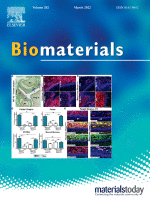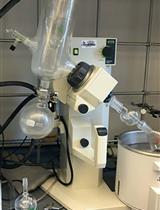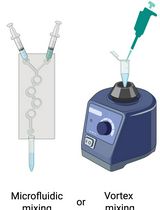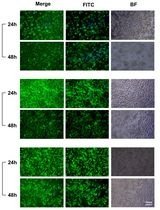- EN - English
- CN - 中文
Preparation and Characterization of DNA-assembled GRS-DNA-CuS Nanodandelions
DNA组装的GRS-DNA-CuS纳米蒲公英的制备和表征
(*contributed equally to this work) 发布: 2023年01月20日第13卷第2期 DOI: 10.21769/BioProtoc.4595 浏览次数: 1389
评审: ASWAD KHADILKARValeria B Fernandez ValloneAnonymous reviewer(s)
Abstract
In this study, we introduce a detailed protocol for the preparation of DNA-assembled GRS-DNA-copper sulfide (CuS) nanodandelion, a multifunctional theranostics nanoparticle. Using transmission electron microscope (TEM) and dynamic light scattering techniques, we characterize the physicochemical property of DNA-assembled GRS-DNA-CuS nanodandelions and their dissociation property after the first near-infrared (NIR) light irradiation. In addition, we systematically monitor the processes of tumor accumulation and uniform intratumoral distribution (UITD) of ultrasmall CuS photothermal agents (PAs), which are dissociated from GRS-DNA-CuS nanodandelions, by Raman imaging and photoacoustic imaging, respectively. The UITD of the dissociated ultrasmall CuS PAs can enhance the therapeutic efficiency of photothermal treatment under the second NIR light irradiation. Overall, this protocol provides a powerful tool to achieve UITD of PAs by explosively breaking the hydrogen bonds of DNA in GRS-DNA-CuS nanodandelions under NIR light irradiation. We expect DNA-assembled nanotheranostics to serve as a robust platform for a variety of biomedical applications related to photothermal therapy in the oncology field. This protocol can increase experimental reproducibility and contribute to efficient theranostics nanomedicine.
Keywords: DNA assembly (DNA组装)Background
Although traditional cancer treatments (e.g., chemotherapy, radiotherapy, and surgery) have been widely applied in clinical cancer therapy, they have many side effects (such as systemic toxicity or incomplete elimination), leading to poor therapeutic efficiency and easy recurrence and metastasis. In recent years, photothermal therapy (PTT) has been broadly investigated because of its advantages in deeper tissue penetration, higher spatial selectivity, and local tumor thermal ablation with less systemic toxicity and higher anti-tumor efficiency (Xiong et al., 2020; Zhou et al., 2021). However, due to the non-uniform tumor distribution of photothermal agents (PAs), PTT cannot kill all tumor cells (Yan et al., 2016). Therefore, it is urgent to develop a novel method to achieve uniform intra-tumor distribution (UITD) of PAs and high photothermal therapeutic efficiency.
Several size shrinkage strategies based on cross-linking covalent bonds have been developed to improve UITD of PAs (Li et al., 2016; Zhou et al., 2019; Wang et al., 2020). However, covalent bonds with high bond energy cannot be broken quickly and the synthesis of size-shrinkable nanosystems is complex, which easily results in differences in physicochemical characteristics between different batches. Because of the low hydrogen bond energy in the DNA double helix and the simplicity of DNA self-assembling process, DNA-assembled nanotheranostics may be a promising platform to achieve UITD of PAs.
In this protocol, we will introduce a DNA-assembled nanosystem, i.e., DNA-assembled GRS-DNA-CuS nanodandelion (as shown in Figure 1), which is composed of the core of a Gap-enhanced rod-shaped gold structure (termed as GRS) modified by single-stranded DNA (ssDNA), and the shell of ultrasmall copper sulfide (CuS) PAs modified by complementary single-stranded DNA (cssDNA) (Zhang et al., 2022). Based on the principle of Watson–Crick base pairing, GRS-DNA-CuS nanodandelions are prepared by cross-linking hydrogen bonds between GRS-ssDNA and CuS-cssDNA PAs. Under the first near-infrared (NIR) laser irradiation, hydrogen bonds in the GRS-DNA-CuS nanodandelions are explosively broken once above the DNA melting temperature, and the large-sized GRS-DNA-CuS nanodandelions are dissociated into GRS and ultrasmall CuS PAs within one minute (Figure 1). Both the rapid increase in local concentration of ultrasmall CuS PAs and the slight increase in intratumor temperature have effectively promoted UITD of CuS PAs. This UITD helps to eliminate the subcutaneous solid tumors under the second NIR light irradiation. In a word, we will present the detailed preparation process of DNA-assembled GRS-DNA-CuS nanodandelions and characterize their physicochemical and dissociation properties in order to provide a novel UITD-guided PTT strategy and advance their therapeutic and diagnostic applications in clinic.
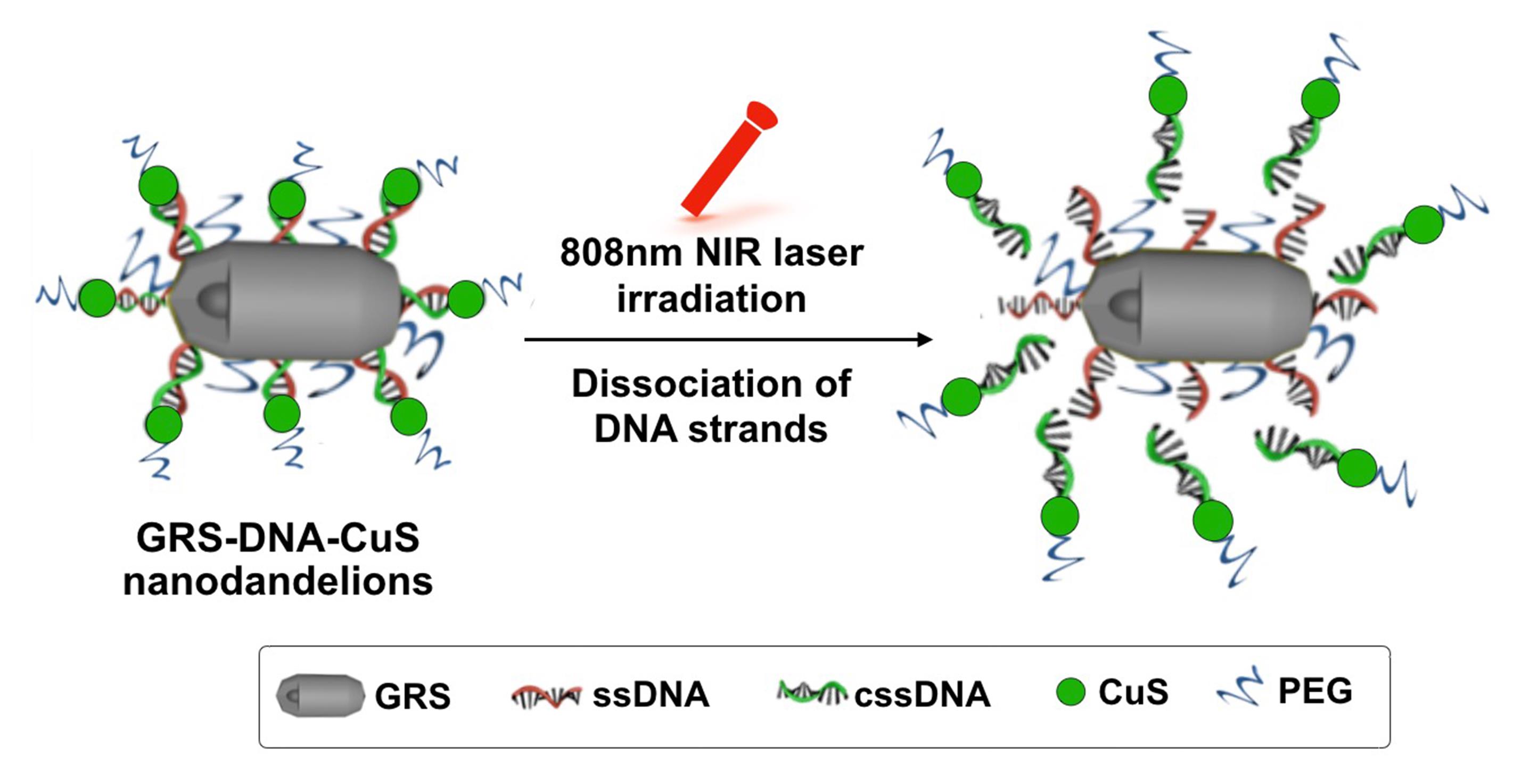
Figure 1. Schematic illustration of the dissociation process of DNA-assembled GRS-DNA-CuS nanodandelions under 808 nm NIR laser irradiation. Left: 3D structure of DNA-assembled GRS-DNA-CuS nanodandelions. GRS: Gap-enhanced rod-shaped gold structure; CuS: copper sulfide.
Materials and Reagents
15 mL centrifuge tube (BIOFIL, catalog number: CFT013150-BD)
50 mL centrifuge tube (BIOFIL, catalog number: CFT010500)
Gold (III) chloride hydrate (HAuCl4·4H2O) (Sinopharm Chemical Reagent Co., Ltd, catalog number: 10010711)
Cetyl trimethyl ammonium bromide (CTAB) (Aladdin, catalog number: H108983-500g)
Sodium borohydride (NaBH4) (Aladdin, catalog number: S108355-25g)
Sodium oleate (NaOL) (Aladdin, catalog number: S104196-250g)
Silver nitrate (AgNO3) (Aladdin, catalog number: S116268)
Hydrogen chloride (HCl) (Merck, Sigma-Aldrich, catalog number: 258148)
Ascorbic acid (AA) (Aladdin, catalog number: 50-81-7)
4-Nitrobenzenethiol (4-NBT) (Aladdin, catalog number: N298977)
Cetanecyl trimethyl ammonium chloride (CTAC) (Aladdin, catalog number: H105309)
mPEG5k -SH (JenKem Technology, catalog number: 729108-1G)
Tween 20 (Aladdin, catalog number: T104863-100ml)
Sodium citrate dihydrate (Aladdin, catalog number: S434901)
Cupric chloride (CuCl2) (Aladdin, catalog number: C106774-50g)
Single-stranded DNA (ssDNA, sequence: 5′-TAG GTG TAG TGA GGA AAA AAA AAA A-C6-SH-3′, 200 μL, 10 μM) (Sangon Biotech Limited Co. Shanghai, China, personalized customization)
Complementary single-stranded DNA (cssDNA, sequence: 5′-TCC TCA CTA CAC CTA AAA AAA AAA A-C6-SH-3′, 380 μL, 10 μM) (Sangon Biotech Limited Co. Shanghai, China, personalized customization)
Vernier caliper (Shanghai Shenhan Measures, catalog number: 43528447520)
Pipettes (Biosharp, catalog number: BS-XG-0.3L)
Capillary cell (MALVERN, catalog number: DTS1070)
PBS (Sangon Biotech, catalog number: B640435)
Balb/c nude mice (Shanghai SLAC Laboratory Animal Co., Ltd (Shanghai, China))
Equipment
Centrifuge (Thermo Fisher, model: Heraeus Fresco 21)
-80°C freezer (Thermo Fisher, model: ORMA 88000 SERIES)
Water purification system (Millipore, model: Direct-Q5)
Hot plate magnetic stirrer (IKA, model: C-MAG HS7 digital)
Electron microscopy (FEI, model: FEI-TEM)
Malvern laser particle size analyzer (Malvern 3000, Zetasizer Nano ZS)
Inductively coupled plasma–mass spectrometry, ICP-MS (VARIAN, model: 710-ES)
Renishaw inVia confocal Raman spectrometer (Renishaw, model: inVia)
Ultracentrifuge (Eppendorf, model: Centrifuge 5804R)
Ultrasonic cell disruptor system (SONICS, model: S-450D)
Rapid mixer (Kylin-Bell, model: Vortex-5)
Ultrasonic cleaner (Scientz, model: SB-5200DTS)
Thermal imaging camera(FLIR, model: AX5)
Ultracentrifuge (Optima, model: XPN-80)
Procedure
文章信息
版权信息
© 2023 The Authors; exclusive licensee Bio-protocol LLC.
如何引用
Wang, H., Cui, Y., Zhang, Y. and Xiao, Z. (2023). Preparation and Characterization of DNA-assembled GRS-DNA-CuS Nanodandelions. Bio-protocol 13(2): e4595. DOI: 10.21769/BioProtoc.4595.
分类
分子生物学 > 纳米颗粒 > 植物源纳米颗粒
生物工程 > 生物医学工程
您对这篇实验方法有问题吗?
在此处发布您的问题,我们将邀请本文作者来回答。同时,我们会将您的问题发布到Bio-protocol Exchange,以便寻求社区成员的帮助。
提问指南
+ 问题描述
写下详细的问题描述,包括所有有助于他人回答您问题的信息(例如实验过程、条件和相关图像等)。
Share
Bluesky
X
Copy link


